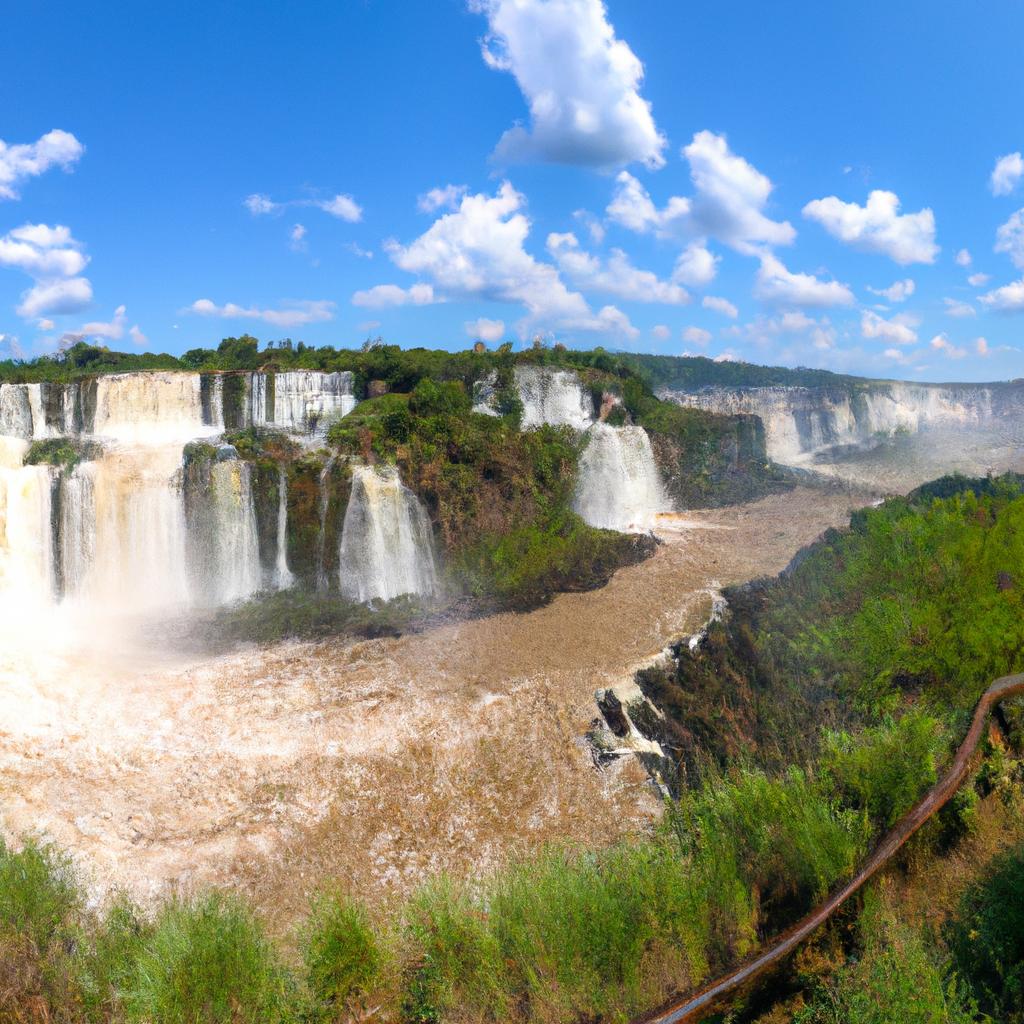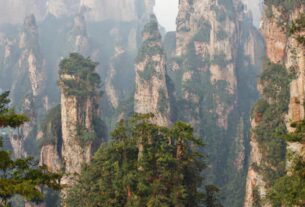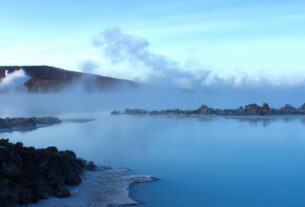If you’re craving an awe-inspiring natural wonder that will truly leave you breathless, look no further than Iguazu Falls. This remarkable waterfall system, located on the border of Brazil and Argentina, stands as one of the most magnificent and impressive natural landmarks in all of South America. With over 275 individual falls stretching nearly two miles wide, Iguazu Falls is an absolute sight to behold.
A Geographic Marvel
Iguazu Falls is positioned along the Iguazu River, which forms the border between Brazil and Argentina. The falls themselves are divided into two main sections: the Brazilian side and the Argentinian side.
On the Brazilian side, visitors can enjoy breathtaking panoramic views from several lookout points, with the Devil’s Throat being the most popular. This U-shaped waterfall stands over 262 feet tall, leaving all who witness it in awe. For a more immersive experience, adventurous souls can take a boat tour that brings them up close and personal with the falls.
On the Argentinian side, visitors can explore a series of trails that wind through the forest and lead them right to the edge of the falls. The highlight of this side is the Garganta del Diablo (Devil’s Throat), the largest and most powerful waterfall in the entire system.
Borders Become Spectacles
The border between Brazil and Argentina is marked by the Iguazu River, which also happens to be the site of the breathtaking Iguazu Falls. Both countries have collaborated to establish national parks on either side of the river, ensuring the protection of the falls and the surrounding ecosystem.
The Brazilian side of the falls can be found in the state of Paraná, while the Argentinian side is located in the province of Misiones. Both sides offer unique and captivating views of the falls that are well worth exploring.
Weather and Climate
The climate surrounding Iguazu Falls is subtropical, promising warm temperatures and high humidity all year round. However, the rainy season, which occurs from December to March, is when the falls are at their most impressive. It is essential to note that this is also the busiest time of year for tourism, so planning accordingly is crucial.
If you prefer cooler weather and fewer crowds, the dry season from April to November is a great time to visit. The falls may be less grand during this time, but the weather is more pleasant and less humid.
Cultural Significance
Iguazu Falls holds a rich history and cultural significance for both Brazil and Argentina. Indigenous peoples have inhabited the falls for thousands of years, and they have played a vital role in local folklore and mythology.
According to the Guarani people, who still reside in the area today, the falls came into existence when a great serpent split the river in two due to the anger caused by a pair of star-crossed lovers. The falls are also believed to serve as the gateway to the afterlife, where souls cross the river to reach the other side.
In the late 19th century, Iguazu Falls became a popular tourist destination, captivating visitors from all corners of the globe. Today, it attracts millions of visitors annually and stands proudly as one of the most visited natural landmarks in South America.
A Tapestry of Nature
Iguazu Falls is not only a breathtaking sight but also a haven for diverse flora and fauna. The falls are nestled within the Atlantic Forest, one of the most biodiverse regions in the world.
Comprising over 275 individual cascades, the falls are surrounded by lush forests and are home to a variety of wildlife, including toucans, coatis, and capuchin monkeys. To protect this valuable ecosystem and its inhabitants, both Brazil and Argentina have established national parks on either side of the falls.
Sustainable environmental conservation efforts have been in place for decades, with the parks implementing measures to minimize the impact of tourism on the environment. Visitors are encouraged to follow guidelines, stay on designated trails, and respect wildlife.
Iguazu Falls showcases the remarkable cultural and environmental heritage of the region. It is an absolute must-visit for anyone traveling to Brazil or Argentina, offering an unforgettable and immersive experience.
Beyond the Falls
Iguazu Falls is not merely a natural wonder but also a bustling hub of activity and adventure. The region offers a plethora of tourist attractions and activities to heighten your experience, including:
Popular Tourist Attractions
- Macuco Safari: A thrilling boat tour that takes you to the base of the falls.
- Parque das Aves: A bird park boasting over 150 species of birds.
- Itaipu Dam: One of the largest hydroelectric dams globally, located near the falls.
Adventure Activities
- Zip-lining: Soar above the falls on an exhilarating zip-line tour.
- Rafting: Embark on a high-speed rafting tour down the river.
- Hiking: Explore the numerous trails surrounding the falls by foot.
Choosing the Right Time to Visit
The best time to visit Iguazu Falls is during the rainy season, from December to March. This period showcases the falls at their most impressive, with powerful flows and high water levels. Keep in mind that this is also the peak season for tourism, so expect crowds and book accommodations well in advance.
Alternatively, if you prefer cooler weather and fewer tourists, the dry season from April to November is an excellent choice. However, bear in mind that the falls may be less grand during this time.
In Conclusion
In conclusion, Iguazu Falls is an absolute must-see destination for all travelers exploring South America. From the breathtaking waterfalls to the abundance of wildlife and adrenaline-pumping adventure activities, there is something to captivate everyone. Whether you visit during the rainy or dry season, prepare to be astounded by the unrivaled beauty of this natural wonder.
To plan your trip to Iguazu Falls, ensure you book your accommodations and activities well in advance, especially during peak seasons. And for more information on all things nature, gardening, and animals, visit TooLacks, your go-to source for news and information in these fields.



